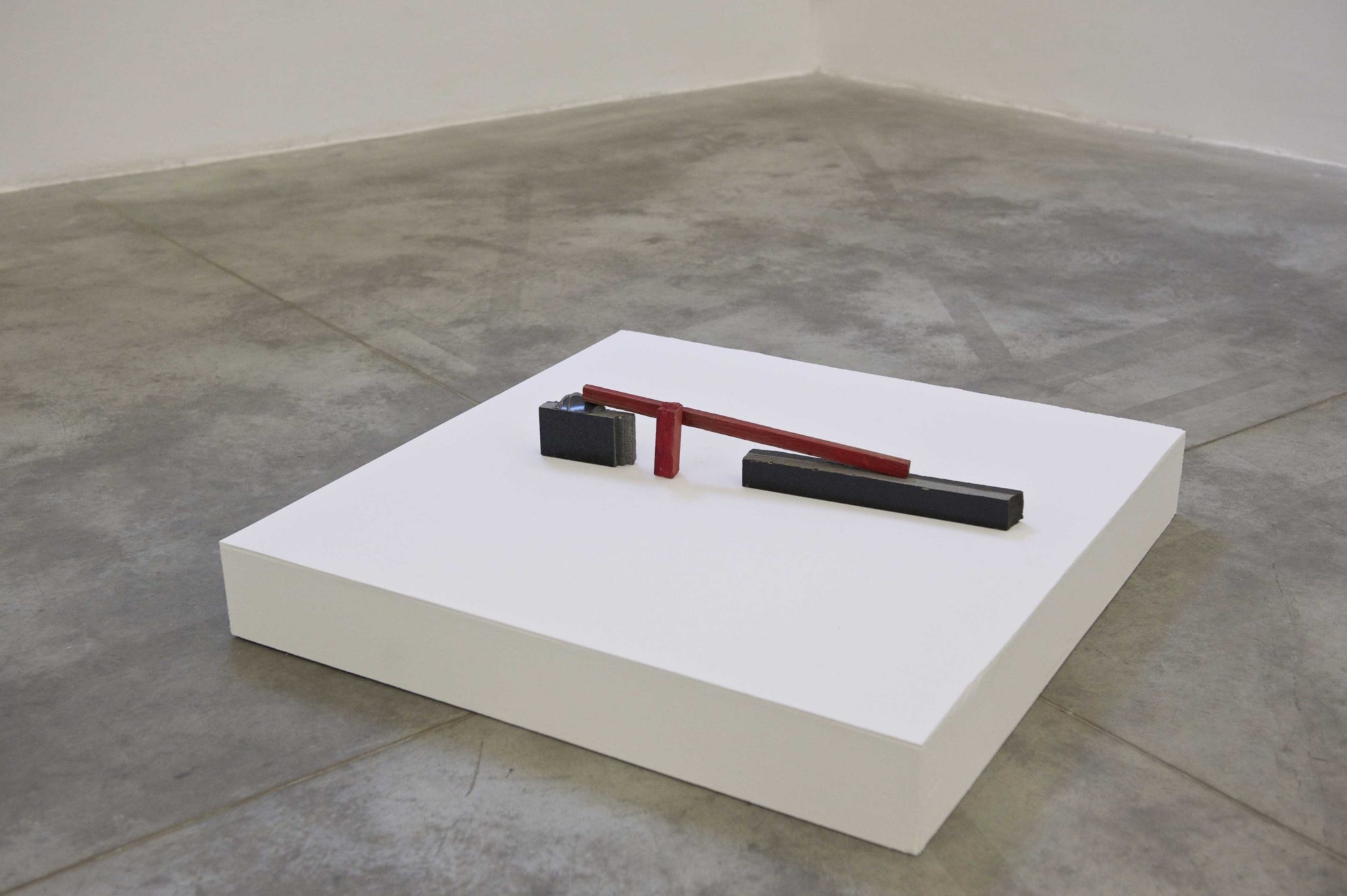Kostis Velonis’s Gra(m)mary of Puppetry represents a philosophical enquiry on the Greek artist’s part: one that broaches classical influences and the contemporary political situation both in his home country and the wider world. The title of the show is a play on words, exploiting the similarity between ‘grammary’ (archaic English for ‘grammar’); ‘gramary’, meaning ‘magic’, or ‘the occult’; and ‘gram’, a Greek prefix meaning ‘write’, or ‘written’. A study of puppetry, then, as the title suggests, but one that takes into account the controlling auspices of rationality (grammar as a form of puppetmastery) and the life-giving properties of ‘magic’ (puppetry as a means of breathing life), Velonis’s exhibition thus reflects pointedly on some current philosophical themes. These principally revolve around the viability of a distinct human ‘subjectivity’ that might mark out the individual from both the economic machine and the wider objective reality of which it is part.
The 22 works here – collages, inkjet prints and sculptures incorporating wood, clay, granite and marble – all reference in some way the contradictory essence of being. Namely, that life is both magical and a mechanical construct, with all rationalist attempts to reduce being to mere ‘matter’ going some way to explaining ‘how’ but failing to resolve the ‘why’. While some of the prints appear to be early astrological diagrams and studies – tentative yet accomplished renditions of a vast and unknowable universe, Neptune (all works 2013) and Moon Miranda being memorable examples – a notable exception, Entre Nous (Between Us), features two theatrical masks placed on a stone chair. With the masks hung to meet the average eye level, the effect is such that while it is the masks that lack human bodies and heads to give them life, it is as if they look into the viewer. (The work is influenced by French artist Claude Cahun, who worked with theatre and issues of gender, sexuality and role reversal.)
At hand is a notion of duality – of the object that lives and of the living being that is an object – which recurs throughout. Touching Hades is a modestly scaled floor-level sculptural work, featuring a small piece of wood that bridges a gap between two pieces of granite placed on a plinth. This ‘bridge’ also represents the wooden handle via which a string puppet is operated. The title refers to the underworld (Hades being, in Greek myth, the god of the underworld), signifying that puppetry is both a form of liberation and of control. Another sculpture, Grotto (Every Thought Flies) – is inspired by the Bomarzo Monster Park in northern Lazio, commissioned by Pier Francesco Orsini, a warlord and patron of the arts, in memory of his wife. Built in the mannerist period, the park features oversize animals and mythical creatures, including a large ogre’s head (large enough that it can be walked into) bearing the inscription ‘every thought flies’. Its title suggests both the fleeting nature of life and the difficulty that thought has in grasping reality.
In all, the show adequately describes an eternal problem that has particular relevance today as science reveals the purely chemical nature of cognition. Specifically, should we privilege human thought or objective reality? In light of current concerns in philosophical thought – the object-oriented philosophy of Graham Harman, the speculative materialism of Ray Brassier, Quentin Meillassoux, et al. – this is timely; and a bold admission that perhaps we have never had the answers to the bigger questions.
This article was first published in the Summer 2013 issue.
